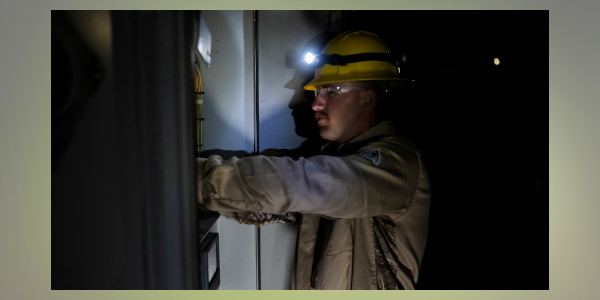For electrical utilities, typical headlamps can be a dangerous source of ignition if workers unwittingly enter a hazardous area or are exposed to flammable materials or conditions.
Safety considerations are particularly important considering OSHA’s recently issued standard for construction work in confined spaces (Subpart AA of 29 CFR 1926). The new standard recognizes that such spaces can present physical and atmospheric hazards that can be avoided if recognized and addressed prior to entry. It is designed to eliminate potentially deadly hazards by requiring employers to determine what kinds of spaces their workers are in; what hazards could be there; and how those hazards should be made safe (including the use of headlamps, flashlights, and other lighting equipment that carry the proper safety ratings).
Therefore, in production, service, or maintenance settings where the environment is inherently volatile, headlamps should carry the proper certification for various classes, divisions, and groups of materials. When a headlamp is rated for all these options, it essentially means it is certified as safe for use in most hazardous environments.
As one example in the industry, the intrinsically safe Vizz II headlamp by Princeton Tec, meets the requirements (Classes I, II, III; Divisions 1,2; and Groups A-G). Trenton, NJ based Princeton Tec is a producer of ETL and UL-approved lighting products and manufactures headlamps that meet strict global safety requirements.
“Whether for OSHA, Zone 0, or state standards, intrinsically safe products like the Vizz II headlamp help safety officials ensure that all the bases are covered. So, there is nothing from the lighting that could spark a potential fire or explosion in a work environment,” says John Navarro, a purchasing agent for Bayville, NJ-based CWR Wholesale Distribution, a supplier to various industries including automotive, consumer electronics, oil and gas, and marine. Previously, Navarro was a nationally registered paramedic and certified New Jersey state hazardous material technician.
Because headlamps can be dropped or bumped in the demanding settings serviced by utilities, it is also important that the equipment is designed to reliably withstand rough handling.
In response, some manufacturers like Princeton Tec now make headlamps with durable thermoplastic material designed to withstand drops and rough handling including being thrown into a truck bed. The units not only provide up to 10 hours of light without a battery change but also have superior resistance to common, potentially dangerous chemicals and solvents utilized by utilities.
The latest models also offer anti-static properties and safety features, such as a mechanical locking mechanism that requires a tool to open the battery compartment. This prevents users from inadvertently opening the battery housing in a hazardous environment, which could not only result in electric shock, but also potentially ignition or explosion.
“Many of our corporate customers specify Princeton Tec headlamps and lighting products due to the reliability, longevity, price point, and made in U.S.A. production,” says Navarro. “When intrinsically safe equipment matters, it is essentially the gold standard.”
For more info, call 1-800-257-9080; email questions@princetontec.com; visit princetontec.com; or write to Princeton Tec, PO Box 8057, Trenton, NJ 08650.




